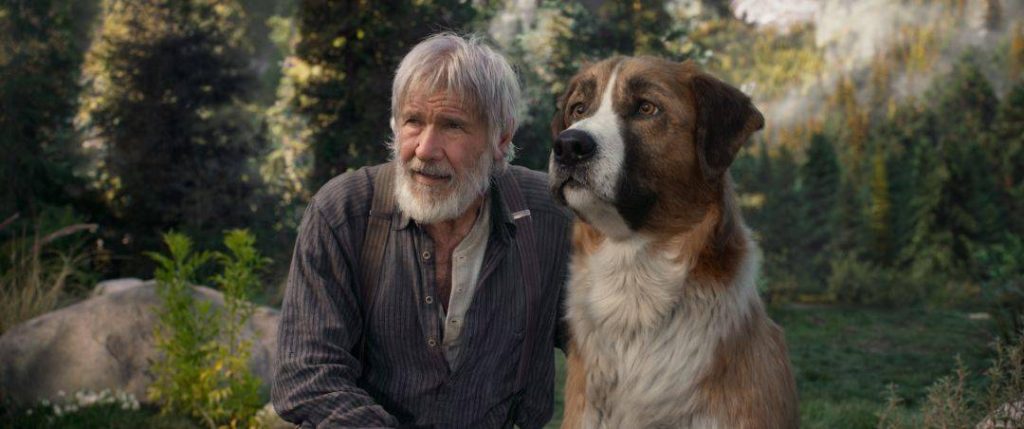The movie “The Call of the Wild” is adapted from Jack London’s classic novel of the same name. This work holds a significant place in literary history for its profound exploration of human nature and naturalistic style. The film respects the original work while employing modern cinematographic techniques to immerse the audience in a world filled with primal power and natural beauty. This review will delve into the narrative themes, character development, visual presentation, and reflections on the relationship between humanity and nature, exploring the film’s depth and charm.
Narrative Themes: The Dual Call of Freedom and Belonging
“The Call of the Wild” centers around Buck, a dog whose adventures in the North American wilderness tell a story of freedom and belonging. In the film, Buck transitions from being a pampered pet in a wealthy household to enduring kidnapping, violence, and hard labor, eventually becoming the king of the wild. This journey represents a return to his true nature.
Buck’s fate is closely tied to his changing owners: from the indulgent family who dotes on him, to the greedy gold prospectors who treat him harshly, and finally to John Thornton, who understands and respects his nature. Each relationship propels Buck from dependency to independence. Especially poignant is his deep bond with Thornton, which serves as Buck’s last warm connection to human society and contrasts with his ultimate choice of a life in the wild.
The call of freedom runs throughout the film, while the pursuit of belonging adds depth to its humanistic themes. As Buck finds belonging with Thornton, he is simultaneously drawn to the wild. This dual call reflects humanity’s ultimate quest for self-identity: the yearning for intimacy and the longing for freedom.
Character Development: Resonance Between Animal and Human Nature
One of the most touching aspects of the film is the characterization of Buck. As a dog, Buck serves as the central narrator of the film. His expressions and actions convey not only an animal’s authenticity but also emotions and thoughts. Through CGI technology, Buck’s behavior appears natural and fluid, while his slightly anthropomorphized features enable the audience to empathize with him.
Among the human characters, John Thornton stands out. Played by Harrison Ford, Thornton is a man of deep wounds yet profound kindness. His relationship with Buck evolves from tentative interactions to mutual trust, portraying a profound friendship that transcends species. Thornton’s loneliness mirrors Buck’s wandering journey; both are searching for inner belonging. Thornton’s life is filled with loss and regret, and Buck’s companionship becomes his vital connection to the world.
In contrast, the greedy and violent characters like the gold prospector Hal represent the selfish and avaricious aspects of civilized society, starkly opposing the freedom of the wild. This dichotomy deepens the film’s exploration of humanity and nature.
Visual Presentation: The Majesty of Nature and the Awe of the Wild
The film’s visual effects are one of its greatest highlights. The majestic landscapes of the North American wilderness, captured through high-quality filming and CGI, transport the audience to vast forests, rushing rivers, and snow-covered mountains. This pristine beauty of nature provides a credible backdrop for the story while evoking the grandeur of the natural world.
Several scenes stand out: for example, the moment Buck is first chosen for the sled team, running through the snowfields conveys a sense of raw power; or Buck running with wolves under the moonlight, a poetic and wordless expression of freedom. The director skillfully combines light, angles, and layers to merge the beauty of nature with the emotional evolution of the characters, enhancing the story’s impact.
Moreover, while Buck’s CGI depiction has faced some criticism, it undeniably allows for greater possibilities in the film. Through digital technology, Buck exhibits a broader range of emotions and behaviors, making him more than just an animal character but the soul of the story.
Humanity and Nature: Coexistence or Conflict?
“The Call of the Wild” is not merely a film about adventure; it is also a philosophical reflection on the relationship between humanity and nature. Through Buck’s experiences, the film reveals the tension and integration between modern civilization and primal nature.
In the film’s first half, Buck is forced to leave his comfortable family life and enter a survivalist world. This transition from civilization to the wild reflects humanity’s exploitation and oppression of nature. The cruel gold prospectors symbolize humanity’s plunder of natural resources and life in pursuit of wealth and power. Conversely, Thornton represents another possibility: a lifestyle of harmony and coexistence with nature. His respect and understanding of Buck’s instincts suggest that humanity can choose a different path and build a more equitable relationship with nature.
Buck’s eventual return to the wild is both a celebration of natural beauty and a critique of human society. Modern civilization offers convenience and safety but robs creatures of their instincts and freedom. Through Buck’s choice, the film urges viewers to rethink the relationship between humanity and nature: should we conquer nature or coexist with it?
Reflections Inspired by the Film
“The Call of the Wild” is not only a visual and emotional masterpiece but also a profound reflection. Through Buck’s growth, the film inspires audiences to consider modern humanity’s relationship with nature. In today’s highly industrialized world, humanity’s impact on nature can no longer be ignored. Have we gone too far, losing our primal reverence for nature?
The film’s message is clear: nature cannot be conquered, and human happiness and progress depend on respecting and living in harmony with it. Buck’s choice embodies a longing—a yearning to return to authenticity. This reminds us that amidst the hustle of modern life, we should make time to reconnect with nature and find inner balance.
At the same time, the film calls on humanity to reevaluate the meaning of civilization. While civilization brings progress, it also alienates and destroys nature. As we pursue economic growth and technological advancement, have we neglected the delicate and precious connection between humanity and nature?
Buck’s story serves as a warning. It is not just about a dog’s life journey but about each of us. Everyone has a wilderness within them, a place of freedom and the unknown. How we respond to this wilderness will determine whether we find our true belonging.
Conclusion: A Journey of Exploring the Meaning of Life
“The Call of the Wild” is more than a visual feast; it is a philosophical work. Through Buck’s story, it guides viewers to reflect on the complex relationships among freedom and belonging, civilization and nature, humanity and instinct.
In the final scene of Buck running freely in the wilderness, we witness the truest response to the essence of life. This film reminds us that while pursuing modernization and material wealth, we should not forget to listen to the call of the wild deep within. Perhaps, we all need an adventure to find our own belonging.
In summary, “The Call of the Wild” is a film that balances entertainment and intellectual depth. Whether you are a nature enthusiast or interested in the philosophy of human nature, this film is well worth watching.













